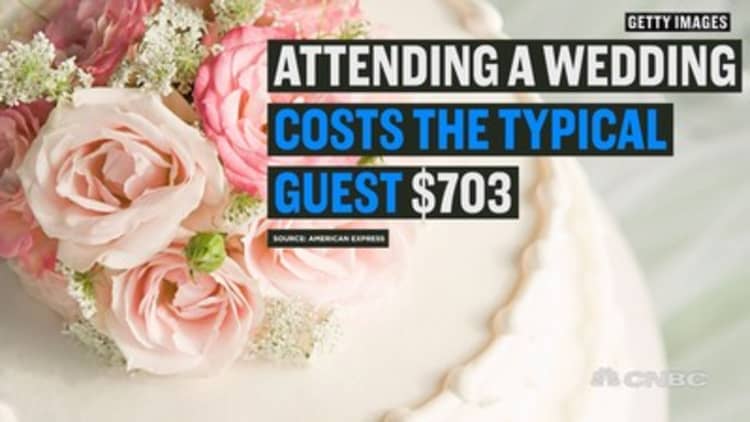
The sparkle of a pricey engagement ring may be fading for young consumers.
Many millennials say they aren't willing to spend big on a ring, according to a new survey by TheCashlorette.com, a subsidiary of Bankrate. The site polled 1,001 adults in late July.
"Older millennials" (those between ages 27 and 36) were the most likely of any age group to say a buyer should spend no more than one month's salary on a ring. Thirty-one percent of older millennials said one month's salary is appropriate, and another 10 percent, less than one month. (That doesn't include 3 percent who said they wouldn't spend anything, or don't believe in engagement rings.)
To compare, 25 percent of Gen Xers and 21 percent of baby boomers think one month's salary on a ring is the right number. Another 5 percent in each group said they would spend less than that amount, and 2 percent in each said they would spend nothing.
Millennials tend to have other financial goals that compete with a ring, said Sarah Berger of TheCashlorette.
"Older millennials could still be saddled with student loan debt, and many are trying to save for a down payment on a house," she said.
This generation also tends to be less interested in expensive material possessions, she said.
"Millennials gravitate toward spending money on experiences, and not on things," Berger said.
Recent wedding trends reflect that. The average wedding in 2016 cost $35,329, an all-time high, according to a report from wedding site The Knot. (See infographic below.) From 2009 to 2016, the average number of guests per wedding dropped to 141 from 149 — but the per-guest cost jumped to $245 from $194 over the same time period.
While millennials say they are aiming for a more affordable engagement ring, they still make up the largest consumer market for diamond jewelry globally.
Average spending on an engagement ring rose to $6,163 in 2016, about a 5 percent jump from the prior year, TheKnot found. And while global production of rough diamonds has been sharply cut in the last decade, a report from De Beers Group estimated that millennials represented nearly 45 percent of the retail value of diamond jewelry in the largest markets in 2015.
"We see, in trends, alternative stones becoming more popular," said Shelley Brown, The Knot's fashion and beauty editor, "but we still see that, far and away, even the round cut diamond is the most popular choice."
Cut to the deal
If you do go for a diamond, deciding which of the "4 C's" — cut, color, clarity and carat — to prioritize can save thousands when it comes time to buy.
Even a ring with a less-than-perfect clarity or color grade can impress your loved one if the diamond has a superior cut, which provides its signature sparkle.
For example, a 1.03 carat round-cut diamond with the highest quality cut, color and clarity currently sells for $17,940 on ethically sourced jewelry site BrilliantEarth.com. A 1.09 carat diamond with a lower color grade but the highest-grade cut and clarity sells for $9,870.
"I wouldn't sacrifice cut, but maybe clarity and color you have some flexibility with," Brown said.
Brown also says the choice of a diamond's shape can "cheat" the look of a larger stone. A round-cut diamond may be iconic, but a shallower cut with a larger table surface area (think: an oval or marquise) creates the illusion of a larger-carat rock for thousands less.


